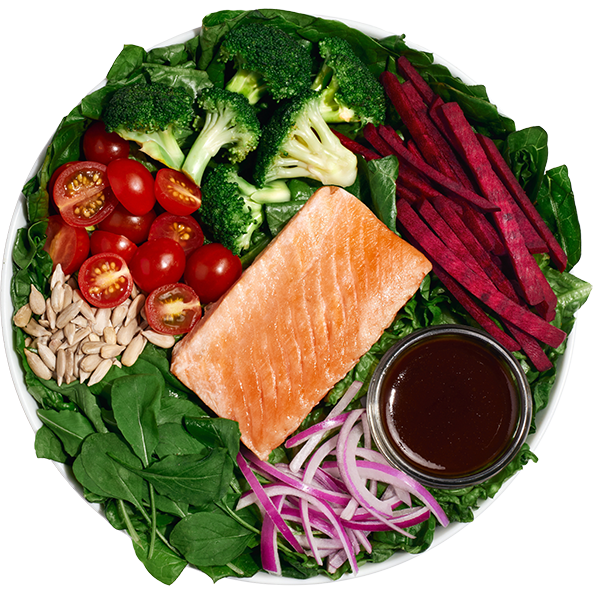Harnessing the Power of Probiotics for Digestive Health

Probiotics are live microorganisms that provide numerous health benefits. They are commonly known as “good” bacteria. These beneficial bacteria play a vital role in maintaining digestive health. Many people overlook the importance of gut health, but it significantly affects overall well-being. This article explores the power of probiotics and how they support digestive health. What Are Probiotics? Probiotics are tiny organisms, often bacteria or yeast. They naturally inhabit the gut and contribute to a balanced microbiome. The microbiome consists of trillions of microorganisms, including bacteria, viruses, and fungi. A healthy microbiome is essential for proper digestion and immune function. Probiotics can be found in various foods and supplements. Common sources include yogurt, kefir, sauerkraut, kimchi, and other fermented foods. Many people incorporate these foods into their diets to enhance gut health. How Probiotics Support Digestive Health Probiotics offer several benefits for digestive health. First, they help maintain a balanced gut microbiome. An imbalance in gut bacteria can lead to digestive issues like bloating, gas, and constipation. Probiotics restore this balance by increasing the number of beneficial bacteria. Second, probiotics can improve digestion. They help break down food and absorb nutrients more efficiently. This process reduces digestive discomfort and promotes regular bowel movements. As a result, incorporating probiotics into your diet can lead to better overall digestion. Third, probiotics can enhance gut barrier function. The gut barrier prevents harmful substances from entering the bloodstream. A healthy gut barrier helps protect against infections and inflammation. It strengthens this barrier, reducing the risk of digestive disorders. Probiotics and Common Digestive Issues Probiotics have been shown to alleviate various digestive issues. For example, they can be effective in treating irritable bowel syndrome (IBS). Research indicates that specific probiotic strains can reduce symptoms like abdominal pain and bloating. By addressing these symptoms, probiotics improve the quality of life for individuals with IBS. Additionally, probiotics can help prevent and treat diarrhea. They are particularly useful for managing antibiotic-associated diarrhea. Antibiotics can disrupt the gut microbiome, leading to an imbalance. Taking probiotics during and after antibiotic treatment can help restore balance and reduce the risk of diarrhea. Moreover, probiotics can support those with lactose intolerance. Many people struggle to digest lactose, the sugar found in milk and dairy products. Some probiotic strains can help break down lactose, making it easier to digest. This can allow individuals with lactose intolerance to enjoy dairy products without discomfort. Choosing the Right Probiotics When selecting probiotics, it’s essential to choose the right strains. Different strains offer various benefits. Look for products that contain well-researched strains, such as Lactobacillus and Bifidobacterium. These strains have been shown to support digestive health effectively. It’s also important to consider the number of live organisms in each serving, measured in colony-forming units (CFUs). A higher CFU count often indicates a more potent product. However, the effectiveness of probiotics also depends on the strains used and individual health needs. You can find probiotics in various forms, including capsules, powders, and fermented foods. Incorporating fermented foods into your diet is an excellent way to boost your probiotic intake. Yogurt, kefir, sauerkraut, and kimchi are delicious and nutritious options. The Importance of Prebiotics Prebiotics are non-digestible fibers that serve as food for probiotics. They help nourish beneficial bacteria in the gut, promoting their growth and activity. Foods rich in prebiotics include garlic, onions, bananas, asparagus, and whole grains. Including prebiotic-rich foods in your diet can enhance the effects of probiotics. A balanced diet that includes both probiotics and prebiotics is essential for optimal digestive health. This combination helps maintain a healthy gut microbiome and supports overall well-being. Potential Side Effects and Considerations While probiotics are generally safe for most people, some may experience mild side effects. These can include gas, bloating, or digestive discomfort, especially when starting a new probiotic. These symptoms usually subside as the body adjusts. Individuals with weakened immune systems or underlying health conditions should consult a healthcare professional before taking probiotics. It is important to ensure that probiotics are appropriate for your specific health needs. Harnessing the power of probiotics can significantly improve digestive health. These beneficial microorganisms help maintain a balanced gut microbiome, enhance digestion, and alleviate common digestive issues. By incorporating probiotics and prebiotics into your diet, you can support your digestive health and overall well-being. As you explore different probiotic sources, focus on well-researched strains and products. A healthy gut is essential for optimal health, and probiotics can play a crucial role in achieving that balance. Consider adding probiotics to your daily routine for a happier, healthier gut. Create your own probiotic-rich meal now! Order from SaladStop! and enjoy a delicious, gut-friendly experience.
Understanding the Environmental Impact of Your Food Choices

Every food choice we make has an impact on our planet. From production to consumption, food affects the environment in many ways, which is why understanding the environmental impact of food choices is so important. At SaladStop!, we prioritize sustainability in our operations. This article explores how our food choices impact the planet and how SaladStop! contributes to a more sustainable food system. The Carbon Footprint of Food Production Food production is a significant contributor to greenhouse gas emissions. Agriculture accounts for nearly 30% of global emissions. Different foods have varying carbon footprints. For instance, animal products tend to produce more greenhouse gases than plant-based options. Choosing more plant-based meals can help reduce your carbon impact. At SaladStop!, we focus on offering a variety of delicious plant-based options. Our menu includes salads and warm protein bowls made from fresh, local ingredients. These meals not only promote health but also minimize the carbon footprint associated with food production. Local Sourcing and Traceability SaladStop! emphasizes the importance of local sourcing. We collaborate with local and trusted farmers to obtain our ingredients. This partnership ensures that our produce is fresh and sustainable. Our sourcing wall in every outlet displays information about our farmers and the origins of our ingredients. This transparency helps customers understand where their food comes from. By sourcing locally, SaladStop! reduces the emissions associated with transportation. Local ingredients require less travel time, resulting in lower greenhouse gas emissions. Supporting local agriculture also strengthens community ties and fosters economic growth. Reducing Food Waste Food waste is a critical issue that contributes to environmental degradation. According to the Food and Agriculture Organization (FAO), about one-third of food produced globally is wasted. This waste results in unnecessary resource consumption, from water to energy. At SaladStop!, we are committed to minimizing food waste. We encourage customers to be mindful of portion sizes. Our customizable meals allow patrons to create bowls tailored to their appetite. This reduces leftovers and minimizes waste. Furthermore, we actively monitor food inventory to ensure that we use ingredients before they spoil. Reusable Practices and Initiatives To further reduce our environmental impact, SaladStop! promotes reusable practices. We encourage customers to bring their own containers through our Bring Your Own Bowl (BYOB) day initiative. On this day, customers receive a discount for using their reusable containers. This practice not only reduces plastic waste but also fosters a culture of sustainability among our patrons. Additionally, SaladStop! provides reusable cutleries in our outlets. By minimizing the use of disposable utensils, we contribute to reducing single-use plastics. Each small action adds up, leading to a more sustainable dining experience. Commitment to Net Zero Outlets SaladStop! is dedicated to achieving net-zero emissions across our outlets. We implement measures to minimize energy consumption and waste. For example, we invest in energy-efficient appliances and lighting. These technologies help reduce electricity usage while maintaining a comfortable dining environment. Moreover, we emphasize responsible water usage. By implementing water-saving fixtures and practices, we conserve this vital resource. Our goal is to create a sustainable operation that positively impacts the environment. Encouraging Sustainable Choices To promote sustainability, SaladStop! also offers a small fee for disposable bags. Customers pay an additional 40 cents for a bag when they forget to bring their own. This initiative encourages customers to think twice before using single-use bags and to opt for reusable alternatives instead. By implementing these measures, we aim to raise awareness about the environmental impact of food choices. Every small action can contribute to a larger movement for sustainability. The Role of Consumers As consumers, your choices matter. Every time you dine at SaladStop!, you contribute to a larger effort toward sustainability. Understanding the environmental impact of your food choices empowers you to make informed decisions. Consider choosing meals that prioritize local ingredients, plant-based options, and minimal waste. In addition, you can advocate for sustainability in your community. Share your experiences with friends and family. Encourage them to explore sustainable dining options and participate in initiatives that promote environmental stewardship. Understanding the environmental impact of your food choices is essential in today’s world. By making conscious decisions, you can help mitigate the negative effects of food production on the planet. SaladStop! leads by example, implementing various sustainability measures to promote responsible consumption. From sourcing ingredients locally to minimizing waste, SaladStop! demonstrates how food choices can positively impact the environment. Learn more about our commitment to sustainability and our Beyond Net Zero goals here. Together, we can create a more sustainable future for our planet, one meal at a time.
The Role of Mitochondrial Nutrition in Energy Production

Mitochondria is the powerhouse of the cell. They play a crucial role in energy production. Understanding mitochondrial nutrition is essential for optimizing energy levels and overall health. Mitochondria convert nutrients from food into adenosine triphosphate (ATP), the energy currency of the body. This article explores the role of mitochondrial nutrition in energy production and its implications for health. What Are Mitochondria? Nearly all eukaryotic cells contain mitochondria, which are organelles. They have a unique structure, consisting of two membranes. The smooth outer membrane contrasts with the highly folded inner membrane, which forms structures called cristae. These cristae, therefore, increase the surface area for chemical reactions. Additionally, mitochondria contain their own DNA, which is separate from the cell’s nuclear DNA. This unique feature allows them to replicate independently. Energy Production and ATP The primary function of mitochondria, therefore, is to produce ATP. They achieve this, in turn, through a process called oxidative phosphorylation. This process occurs in the inner mitochondrial membrane. Here, electrons derived from nutrients are transferred through a series of protein complexes. As electrons move through these complexes, they release energy. The energy pumps protons across the inner membrane, creating a proton gradient. The return flow of protons into the mitochondrial matrix drives ATP synthesis. The mitochondria release ATP into the cytoplasm, where it fuels various cellular processes. As a result, this entire process highlights the importance of mitochondrial health for energy production. The Impact of Nutrition on Mitochondrial Function Nutrition plays a significant role in mitochondrial function. The types of nutrients consumed, therefore, directly influence ATP production. Specifically, mitochondria primarily use carbohydrates, fats, and proteins as fuel sources. Each nutrient goes through different metabolic pathways to produce energy. 1. Carbohydrates: Carbohydrates are broken down into glucose. Glucose enters glycolysis, a process that takes place in the cytoplasm. The end products of glycolysis are pyruvate and ATP. The mitochondria convert pyruvate into acetyl-CoA. This compound enters the citric acid cycle, generating more ATP. 2. Fats: Fats are metabolized through a process called beta-oxidation. The body breaks down fatty acids into acetyl-CoA, which then enters the citric acid cycle. Fats provide a more concentrated energy source compared to carbohydrates. This makes them an important fuel for prolonged physical activity. 3. Proteins: Proteins can also serve as an energy source. However, they are primarily used for tissue repair and growth. Amino acids are converted into various intermediates that enter the citric acid cycle. Key Nutrients for Mitochondrial Health Several nutrients support mitochondrial function and energy production. These include vitamins, minerals, and antioxidants. Here are some key nutrients essential for mitochondrial health: 1. B Vitamins: B vitamins, particularly B1 (thiamine), B2 (riboflavin), B3 (niacin), B5 (pantothenic acid), and B7 (biotin), are vital for energy metabolism. They act as coenzymes in various metabolic pathways, assisting in the conversion of nutrients into ATP. 2. Coenzyme Q10 (CoQ10): CoQ10 is a powerful antioxidant found in the mitochondria. It plays a crucial role in the electron transport chain, facilitating ATP production. CoQ10 levels decline with age, making supplementation beneficial for mitochondrial health. 3. Magnesium: Magnesium is a key mineral involved in ATP production. It serves as a cofactor for over 300 enzymatic reactions, including those in energy metabolism. 4. Antioxidants: Mitochondria generate reactive oxygen species (ROS) during energy production. High levels of ROS can damage mitochondrial DNA and proteins. Antioxidants like vitamins C and E help neutralize these free radicals, protecting mitochondrial health. The Effects of Poor Mitochondrial Nutrition Poor nutritional choices can lead to impaired mitochondrial function. Diets high in refined sugars and unhealthy fats can hinder energy production. This can result in fatigue, reduced physical performance, and increased risk of chronic diseases. Furthermore, mitochondrial dysfunction is linked to various health issues. Conditions such as diabetes, obesity, and neurodegenerative diseases have mitochondrial components. Therefore, optimizing mitochondrial nutrition is essential for preventing these conditions. Strategies for Supporting Mitochondrial Nutrition Mitochondrial nutrition plays a crucial role in energy production and overall health. Understanding the relationship between nutrition and mitochondrial function empowers individuals to make informed dietary choices. By prioritizing nutrient-rich foods, individuals can support their mitochondrial health and enhance energy production. This, in turn, promotes vitality and well-being in daily life. If you’re looking to optimize your mitochondrial health through diet, using tools like the SaladStop! Nutritional Calculator can help you track the nutrients in your meals and make healthier, more informed choices. It’s a great resource for personalizing your diet to support both energy levels and overall well-being. You can try it out here: SaladStop! Nutritional Calculator.
The Role of Food in Different Cultures: A Culinary Exploration

Food is much more than sustenance; it’s a bridge to cultural identity, tradition, and community. At SaladStop!, we embrace this profound connection by celebrating the diversity of global cuisines, culinary traditions, and the rich tapestry of culinary culture that unites us all. Bringing Authentic Flavors to Life At SaladStop!, we are committed to delivering authentic tastes inspired by the world’s culinary traditions. To ensure this, we go beyond just studying recipes—we travel to the heart of these cultures, collaborating with local chefs and food artisans to learn the nuances of their cuisine. For example, our latest Limited-Time Offering (LTO) was inspired by the breathtaking island of Santorini. The Kiki! Salad captures the essence of Greek cuisine with its refreshing flavours and bold simplicity, designed to transport you straight to the sun-soaked shores of the Aegean. Our Seoul-ful Warm Protein Bowl, a staple in our menu, pays tribute to the rich heritage of Korean cuisine. This dish features a harmonious blend of traditional ingredients like seared tuna, baked mushrooms, radish pickles, and sesame seeds, all elevated with the zesty punch of Yuja Vinaigrette. Every element reflects the balance and vibrancy synonymous with Korean food. Staying True to Culture and Craft Our dedication to cultural authenticity means respecting the stories and traditions behind the food. For instance, we source sustainable quinoa from Bolivia, where this nutrient-rich grain has been cultivated for centuries. Similarly, we use olives from Malaysia, highlighting the country’s expertise in growing and producing this versatile ingredient. By sourcing responsibly, we ensure every dish honours its origins, supports ethical practices, and celebrates the culinary heritage of its culture. Whether it’s Bolivian quinoa, Malaysian olives, or Japanese Yuzu, we ensure each dish pays homage to its origin. Our team works tirelessly to bring these flavours to life in ways that respect their roots while delighting our customers. Culinary Diversity Meets Sustainability At SaladStop!, we don’t just honour flavours; we align them with sustainable practices. Our menu items are crafted with responsibly sourced ingredients, ensuring that every dish is both culturally significant and environmentally conscious. The evolving nature of food also inspires us to innovate. By blending cultural traditions with modern tastes, we create dishes that resonate globally. Seasonal menu items and Limited-Time Offerings (LTOs) like the Santorini-inspired Kiki! Salad give our customers a chance to experience the flavours of the world in a way that’s fresh, authentic, and uniquely SaladStop! Why It Matters Food carries the power to connect, unite, and tell stories. At SaladStop!, our mission is to celebrate these stories through every dish we create. By bringing authentic global flavours to the table, we invite you to embark on a culinary journey that highlights the beauty of diversity. Explore our menu today and taste the world—one bowl at a time.
Simplify Healthy Eating with Wisebite by SaladStop!

Healthy eating should be simple, satisfying, and tailored to your needs. That’s where Wisebite, SaladStop!’s revolutionary platform, comes in. Designed to make personalized nutrition effortless, Wisebite helps you align your meals with your unique health goals. With over 500 customized meal options, this platform turns healthy eating into a stress-free and enjoyable experience. How Does Wisebite Work? Wisebite is built for ease and accessibility. Here’s how you can create a meal designed specifically for you: Nutrition at Its Best Wisebite ensures that your meal not only tastes great but also meets your specific dietary requirements. Each recipe adheres to the following guidelines: Allergy-Friendly Options Wisebite also prioritizes safety and inclusivity. You can filter meals to avoid common allergens such as gluten, dairy, nuts, and allium, ensuring that every choice suits your needs. No Commitments, Just Convenience Wisebite makes personalized eating as accessible as possible. There are no sign-ups, no subscriptions, and no commitments. Simply scan the in-store QR code to access the Wisebite dashboard. From there, you can start tailoring your meals in minutes. Why Choose Wisebite? Healthy Eating, Simplified Wisebite takes the hassle out of healthy eating by doing the planning for you. Whether you’re pursuing weight loss, muscle gain, or a balanced diet, this platform ensures your meals work for you. With no commitments and endless flexibility, Wisebite empowers you to make every bite count. Visit your nearest SaladStop! outlet, scan the QR code, and let Wisebite guide you to a healthier, happier you—one customized meal at a time.
The Connection Between Diet and Epigenetics

Epigenetics is a groundbreaking field that uncovers how environmental factors can influence the activity of our genes without altering the DNA sequence itself. Think of it as the bridge between nature and nurture, revealing how lifestyle choices, including diet, can turn genes on or off, thereby affecting health outcomes. This science demonstrates that we are not merely at the mercy of our genetic makeup; instead, we can actively shape our health by influencing how our genes are expressed. As highlighted in the study The Impact of Nutrition and Environmental Epigenetics on Human Health and Disease, dietary choices can significantly affect gene expression through mechanisms such as DNA methylation and histone modification. This underscores the power of nutrition to alter epigenetic patterns, thereby reducing the risk of chronic diseases and promoting overall health. One of the most compelling areas of epigenetics is the role of nutrition. What we eat doesn’t just fuel our bodies—it communicates with our DNA, triggering chemical changes that regulate gene activity. These changes can have profound effects on our risk of developing chronic diseases, our mental and physical health, and even our longevity. Foods rich in specific nutrients and bioactive compounds can promote beneficial epigenetic modifications, while diets high in processed or unhealthy foods may contribute to harmful changes. By understanding the connection between diet and epigenetics, we can harness the power of food to optimize gene expression, paving the way for improved health and disease prevention. Let’s dive deeper into how dietary choices can shape our epigenetic landscape. How Diet Influences Epigenetics Diet has a direct impact on the chemical processes that regulate gene expression, such as DNA methylation and histone modification. These processes control whether a gene is active or silent. Below, we explore how specific dietary components influence epigenetic mechanisms and their effects on health. 1. Fruits and Vegetables: Epigenetic Powerhouses Fruits and vegetables are loaded with polyphenols, vitamins, and antioxidants that can positively influence gene expression. Example: Regular consumption of polyphenol-rich vegetables, such as cruciferous vegetables, has been shown to regulate genes that suppress tumor formation. 2. Healthy Fats: Nourishing Your Genes Omega-3 fatty acids, found in foods like salmon, walnuts, and flaxseeds, play a crucial role in promoting beneficial epigenetic changes. Example: Studies suggest that omega-3 fatty acids can enhance gene expression related to neuroplasticity, improving memory and learning. 3. Whole Grains: Supporting Metabolic Health Whole grains like quinoa, oats, and brown rice deliver fiber and micronutrients that actively enhance healthy gene expression. Example: Regular consumption of whole grains has been linked to favorable changes in genes that regulate blood sugar levels, supporting long-term metabolic health. 4. Fermented Foods: Gut Health and Gene Expression Fermented foods like yogurt, kimchi, and sauerkraut contain probiotics that positively impact the gut microbiome, which in turn influences epigenetics. Example: A diet rich in fermented foods may enhance gene expression related to anti-inflammatory pathways, promoting overall health. 5. Processed Foods: The Epigenetic Downside Diets high in processed foods, refined sugars, and unhealthy fats are linked to negative epigenetic changes. Example: A high-sugar diet can lead to epigenetic modifications that impair insulin signaling, raising the risk of type 2 diabetes. Nutrients That Drive Epigenetic Changes Certain nutrients are particularly influential in epigenetic modifications: Practical Tips for an Epigenetically Healthy Diet Understanding the connection between diet and epigenetics empowers individuals to make better dietary choices. Here’s how to support positive gene expression: The science of epigenetics offers a powerful perspective on how lifestyle choices, especially diet, can influence our genetic destiny. By embracing nutrient-dense, whole foods and minimizing processed options, we can support beneficial gene expression and reduce the risk of chronic diseases. As research in this field continues to evolve, it reinforces the idea that food is not just sustenance—it’s a tool to optimize health at the molecular level. Start making intentional dietary choices today, and unlock the potential for a healthier tomorrow.
Seoul-ful: Korean-Inspired Warm Protein Bowl

The Seoul-ful Warm Protein Bowl from SaladStop! offers a delightful fusion of flavors inspired by Korean cuisine. This bowl combines vibrant ingredients that not only satisfy your taste buds but also provide essential nutrients. Featuring seared tuna, organic quinoa, and a variety of colorful toppings, it’s a dish that brings comfort and nourishment to every meal. A Taste of Korea Korean cuisine is celebrated for its bold flavors and emphasis on fresh ingredients. The Seoul-ful bowl captures these elements beautifully. Each ingredient adds a unique texture and taste, creating a balanced and satisfying meal. Seared Tuna serves as the star of this bowl. Rich in omega-3 fatty acids, it contributes to heart health and supports brain function. Tuna is also an excellent source of high-quality protein, making it an ideal choice for anyone seeking a nutritious meal. Nutritional Benefits of Key Ingredients of Seoul-ful Health Benefits of the Seoul-ful Bowl The Seoul-ful Warm Protein Bowl is more than just a delicious meal; it’s packed with numerous health benefits. The combination of seared tuna and tofu provides a rich source of protein, essential for muscle repair and growth. This is especially beneficial for those who are active or looking to maintain a healthy weight. The organic quinoa not only adds protein but also offers a complete set of amino acids, making it a valuable addition to a balanced diet. The bowl’s vibrant ingredients promote a variety of health benefits. Antioxidants from the romaine lettuce, baked mushrooms, and sweet corn help combat oxidative stress. This can reduce the risk of chronic diseases and support overall health. The inclusion of pickled radishes contributes to digestive health. Their probiotic content supports a healthy gut microbiome, enhancing nutrient absorption and digestion. The Yuja vinaigrette provides a refreshing burst of flavor while adding vitamin C, which is vital for immune function. This dressing not only enhances the dish’s taste but also boosts its nutritional profile. The Seoul-ful Warm Protein Bowl from SaladStop! is a testament to the power of nutritious ingredients and bold flavors. It combines the best of Korean cuisine with a focus on health and well-being. Each component contributes to a balanced meal, rich in essential nutrients. By enjoying this dish, you embrace a culinary experience that nourishes both body and soul. With its vibrant colors and delicious taste, the Seoul-ful bowl is sure to become a favorite for anyone seeking a satisfying and healthy meal. Indulge in the rich flavors of this Korean-inspired creation and elevate your dining experience at SaladStop! Want to enjoy it even sooner? Pre-order your bowl now and have it ready when you are!
The Power of Polyphenols: Enhancing Health through Plant Compounds

Polyphenols are powerful plant compounds known for their health benefits. They play a vital role in promoting overall well-being. These compounds are abundant in fruits, vegetables, tea, coffee, red wine, and dark chocolate. Their antioxidant properties help protect the body from oxidative stress and inflammation. Understanding Polyphenols Polyphenols belong to a diverse group of natural compounds found in plants. They are classified into four main categories: flavonoids, phenolic acids, polyphenolic amides, and other polyphenols. Each category contains various compounds with unique health benefits. Flavonoids are the most studied polyphenols. They include quercetin, catechins, and anthocyanins, commonly found in apples, berries, and green tea. Phenolic acids, like caffeic acid and ferulic acid, are prevalent in coffee and whole grains. Each type of polyphenol offers distinct health advantages. Antioxidant Properties Polyphenols are potent antioxidants. They neutralize harmful free radicals in the body. By doing so, they help reduce oxidative stress, a condition linked to chronic diseases. Oxidative stress occurs when there is an imbalance between free radicals and antioxidants in the body. Research shows that polyphenols can improve antioxidant defenses. They activate the body’s endogenous antioxidant enzymes, enhancing the ability to combat oxidative damage. This protective effect may lower the risk of diseases such as cancer, heart disease, and neurodegenerative disorders. Anti-Inflammatory Effects Inflammation is a natural response of the immune system. However, chronic inflammation can lead to various health problems. It can help modulate inflammatory responses in the body. They inhibit inflammatory markers and reduce the production of pro-inflammatory cytokines. Studies indicate that polyphenols, particularly flavonoids, can lower markers of inflammation. Regular consumption of polyphenol-rich foods can contribute to long-term health benefits. This effect may help prevent conditions like arthritis, asthma, and inflammatory bowel disease. Cardiovascular Health Polyphenols play a crucial role in maintaining cardiovascular health. They help improve blood circulation and lower blood pressure. Several studies demonstrate that polyphenols from sources like red wine and dark chocolate positively affect heart health. These compounds enhance endothelial function, improving blood vessel health. They also reduce LDL cholesterol oxidation, preventing plaque formation in arteries. This protective effect may lower the risk of heart disease and stroke. Brain Health Emerging research suggests that polyphenols may support brain health. They can cross the blood-brain barrier, offering neuroprotective effects. Polyphenols have been linked to improved cognitive function and reduced risk of neurodegenerative diseases. Flavonoids, particularly those found in berries, have shown promise in enhancing memory and learning. They help promote blood flow to the brain, delivering essential nutrients and oxygen. Additionally, polyphenols may reduce inflammation and oxidative stress in brain cells, protecting against neurodegeneration. Gut Health The gut microbiome plays a crucial role in overall health. It can positively influence gut health by promoting the growth of beneficial bacteria. They act as prebiotics, providing nourishment for healthy gut flora. Polyphenols also exhibit antimicrobial properties, helping to control harmful bacteria in the gut. A balanced gut microbiome contributes to better digestion, immune function, and mental health. Regularly consuming polyphenol-rich foods can enhance gut health and support a diverse microbiome. Food Sources of Polyphenols Incorporating these into your diet is easy. Many delicious foods are rich in these beneficial compounds. Fruits like apples, berries, grapes, and cherries are excellent sources. Vegetables such as onions, spinach, and broccoli also provide significant amounts of polyphenols. Beverages like green tea, black tea, and coffee are particularly rich in polyphenols. Dark chocolate is another tasty option, offering a high concentration of flavonoids. Whole grains, nuts, and spices like turmeric and cinnamon also contain these powerful compounds. Tips for Maximizing Polyphenol Intake These remarkable plant compounds enhance health through antioxidant and anti-inflammatory properties, supporting cardiovascular health, brain function, and gut health. By incorporating foods rich in these beneficial compounds into your diet, you can harness their health benefits. Embrace their power and enjoy a delicious, nutrient-dense diet that promotes overall well-being.
Functional Nutrition for Autoimmune Conditions

Autoimmune conditions, where the immune system mistakenly attacks healthy cells, affect millions worldwide. Conditions like rheumatoid arthritis, lupus, and Hashimoto’s thyroiditis can significantly impact daily life. While conventional medicine often focuses on symptom management, functional nutrition for autoimmune conditions takes a holistic approach. It addresses the root causes of these conditions, promoting overall health and well-being. Understanding Autoimmune Conditions Autoimmune diseases occur when the immune system mistakenly targets the body’s own tissues, causing inflammation and damage. Contributing factors include genetic predispositions, environmental triggers, and lifestyle influences, all of which play roles in disease onset and progression. According to research published in Frontiers in Immunology, diet significantly impacts symptom management and quality of life, potentially influencing inflammation and immune function in autoimmune patients. The Role of Nutrition Nutrition is vital for everyone, but it holds particular significance for individuals with autoimmune conditions. Certain foods can either exacerbate or alleviate symptoms. A well-balanced, nutrient-dense diet can support immune function, reduce inflammation, and promote healing. Functional nutrition emphasizes whole, unprocessed foods. This approach prioritizes nutrient density, meaning foods that provide a high amount of nutrients relative to their calorie content. These foods support the body’s healing processes and overall health. Key Principles of Functional Nutrition Specific Nutritional Strategies Lifestyle Modifications In addition to dietary changes, lifestyle modifications can further support managing autoimmune conditions. Regular physical activity, adequate sleep, and stress management are crucial. Gentle exercises, like yoga and walking, can improve physical and mental health. Mindfulness practices, such as meditation and deep breathing, can help reduce stress levels. Functional nutrition offers a comprehensive approach to managing autoimmune conditions. By focusing on personalized dietary strategies, individuals can improve their health and well-being. Incorporating nutrient-dense, anti-inflammatory foods, and considering lifestyle changes can lead to significant benefits. While dietary changes alone may not cure autoimmune diseases, they can provide essential support and enhance quality of life. By embracing functional nutrition, individuals with autoimmune conditions can take control of their health and find relief from symptoms.
Harnessing the Benefits of Dietary Nitrates for Heart Health

Heart health is a vital aspect of overall well-being, and recent research highlights the role of dietary nitrates in promoting cardiovascular function. These naturally occurring compounds found in various vegetables, particularly leafy greens and root vegetables, can significantly impact blood pressure, improve exercise performance, and enhance vascular health. Understanding how dietary nitrates work and incorporating them into your diet can lead to substantial heart health benefits. What Are Dietary Nitrates? Dietary nitrates are compounds made up of nitrogen and oxygen, primarily found in foods like beets, spinach, arugula, lettuce, and celery. When consumed, nitrates convert into nitrites in the mouth and then further into nitric oxide in the body. Nitric oxide plays a crucial role in cardiovascular health by relaxing and widening blood vessels, which leads to improved blood flow and lower blood pressure. The Impact on Blood Pressure High blood pressure is a significant risk factor for heart disease. Research shows that dietary nitrates can effectively lower blood pressure. A study published in the Journal of Nutrition found that participants who consumed beetroot juice, rich in dietary nitrates, experienced a significant reduction in blood pressure compared to those who did not. The mechanism behind this effect lies in the conversion of nitrates to nitric oxide, which dilates blood vessels and enhances blood flow. By incorporating nitrate-rich foods into your daily meals, you can take proactive steps toward managing your blood pressure. Enhancing Exercise Performance In addition to their effects on blood pressure, dietary nitrates also improve exercise performance. Athletes and fitness enthusiasts often turn to nitrate-rich foods to enhance endurance and reduce the oxygen cost of physical activity. A review in the Journal of Applied Physiology concluded that nitrates could increase exercise performance by improving muscle efficiency and reducing fatigue. This means that by consuming foods like beet juice or arugula before workouts, you can push your limits, train harder, and recover faster, all of which contribute to better heart health over time. Promoting Vascular Health Incorporating dietary nitrates into your diet not only benefits your blood pressure and exercise performance but also promotes overall vascular health. Nitric oxide plays a vital role in maintaining the health of blood vessels by preventing platelet aggregation and reducing inflammation. By supporting the endothelium (the inner lining of blood vessels), dietary nitrates help maintain proper vascular function and reduce the risk of atherosclerosis, a condition where arteries become narrowed or blocked. Food Sources of Dietary Nitrates To harness the heart-healthy benefits of dietary nitrates, focus on incorporating a variety of nitrate-rich foods into your meals. Here are some excellent sources: Tips for Maximizing Nitrate Intake To maximize the health benefits of dietary nitrates, consider the following tips: Harnessing the benefits of dietary nitrates can significantly contribute to heart health. By incorporating nitrate-rich foods into your diet, you can help lower blood pressure, enhance exercise performance, and promote vascular health. As you make these changes, remember to pair these foods with a balanced diet and healthy lifestyle choices. Your heart will thank you for it!

